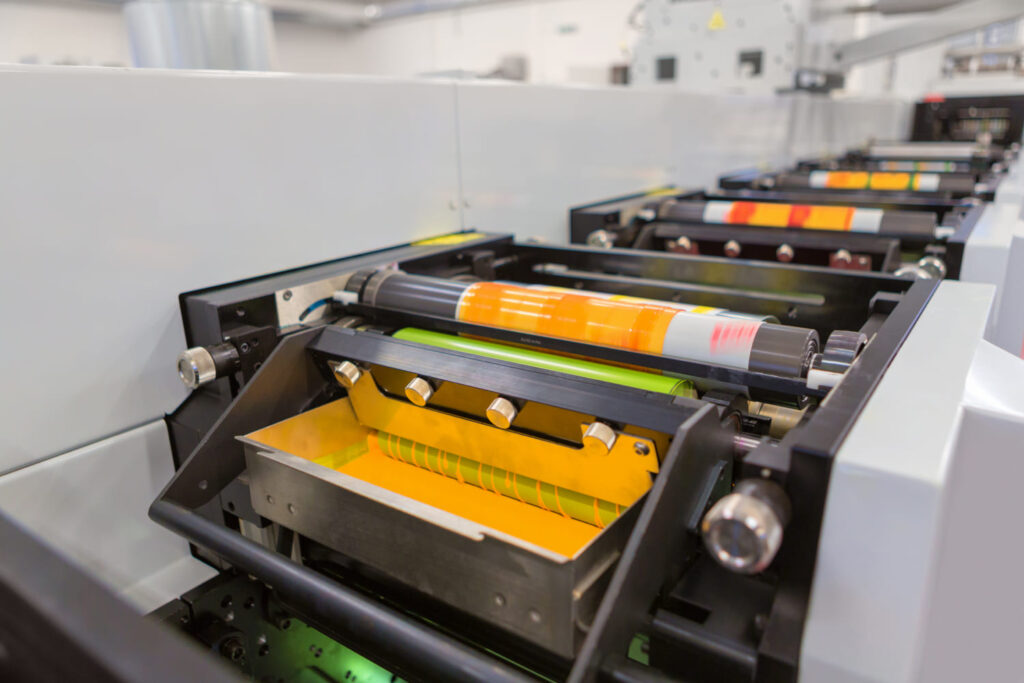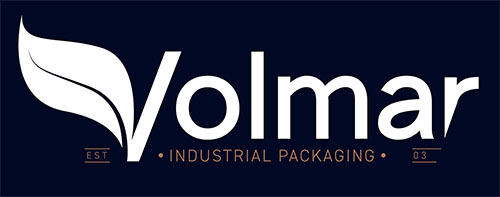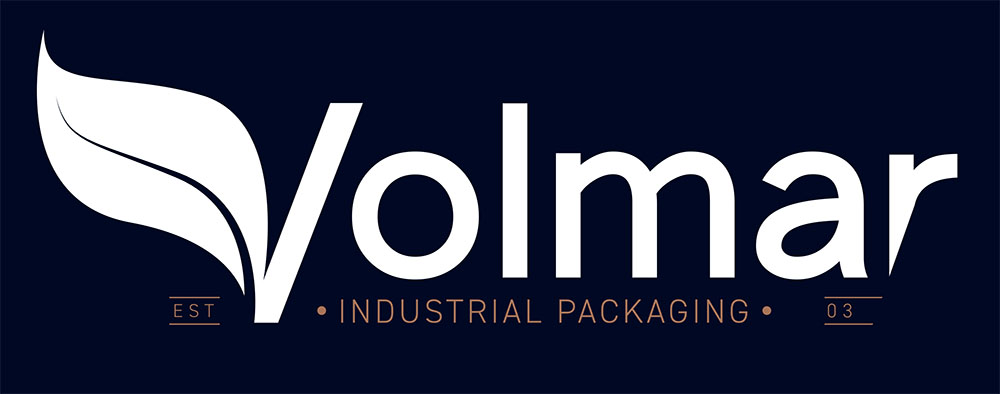
Flexographic printing is a specific printing method, often known simply as flexo printing or flexography. This technique, which is widely used in food packaging, offers many advantages for customizing packaging, to optimize marketing strategies and enhance the product through the packaging design. Discover how flexo printing works and its main applications for food packaging.
What is flexographic printing?
The meaning of flexographic printing is derived from the flexibility of the material initially used for the plates, which is where the term “flexography” comes from. It is a combination of two words “flex”, which stands for flexible, and graphy.
Flexography is a rotary printing technique where the ink is transferred onto the print material using specific, flexible printing plates, also called clichés. A wide variety of print materials can be used, including paper, metallic films and plastic polymers.
As it is a direct printing process, the plates transfer the ink directly onto the material, applying light pressure using a special cylinder around which the print material is wrapped. Flexo printing offers several advantages:
- Automation of the printing process;
- High-speed printing in large runs;
- Less machine maintenance;
- Simpler control over printing;
- Ability to change the print quickly;
- Compatibility with eco-friendly, water-based inks;
- Wide range of suitable inks.
Flexographic printing: how it works
At this point, we’ll take a more detailed look at what the flexo printing process involves to gain a better understanding of how it works. In flexography, the material used for the packaging rotates on rollers through which the ink passes and is transferred through contact with the print material.
An anilox roller applies the ink from an inkwell filled with liquid ink, while a blade removes the excess ink from the material in a similar way to gravure printing. However, in some flexo systems, the ink is applied by a rubber roller that takes the ink from a special well and transfers it onto the anilox roller.
The anilox roller has several cells where the ink is deposited – the number of cells ranges from a minimum of 80 to a maximum of 800 per centimeter. The more wells the anilox has, the more detailed the graphics will be, while anilox rollers with fewer cells are mostly used for heavy block printing.
The ink loaded in the anilox cells transfers onto the plate thanks to the consistency of the ink and the different surface tension of the plate material and the anilox. Finally, the print material is soaked with the ink and adapts perfectly to the roller thanks to the pressure applied by it, resulting in fast and efficient high-quality printing.
Flexographic printing inks
One of the advantages of flexographic printing is that a wide range of inks can be used. Volatile liquid inks are generally used, which contain special solvents and tend to dry quickly, optimizing printing performance. This means that flexo printing can be used on various materials, from plastics to corrugated cardboard to wood.
This method does not cause pollution and complies with the health and hygiene standards for food packaging. As well as solvent-based inks, flexography is compatible with water-based inks, which don’t leave any residue during printing, such as volatile organic compounds (VOCs). They are considered an optimal solution for more eco-friendly printing processes with a lower environmental impact.
UV inks can also be used with flexo printing. They are specific types of inks that activate when exposed to UV rays. They are fluorescent pigments used since the ‘60s, especially for important documents like stamps and banknotes. Today, they are also used with other types of materials like food packaging films, thanks to the introduction of new inks that are free from BPA-based chemical products.
Flexographic machines
Flexographic printing machines can have different structures depending on the printing requirements. In-line models print on one side with in a rotary process and have a series of different printing elements for each color. Central drum planetary systems also generally print on just one side, however, they produce fewer deformities in the material and ensure high register precision.
Stack flexographic presses with independent cylinders, on the other hand, are rotary devices without a single central cylinder, unlike planetary machines. In this case, each printing unit or color number has a dedicated cylinder. This configuration allows for a high level of automation, offering high printing performance and excellent precision.
Volmar offers a wide range of solutions for high-quality food packaging, with various products that are compatible with flexo printing. These include flexible film rolls suitable for HD flexographic printing in up to 10 colors, laminated paper, which can be printed on the outside in up to 8 colors with eco-friendly water-based inks, and sustainable packaging with a low environmental impact to reduce the ecological footprint of your food packaging.

